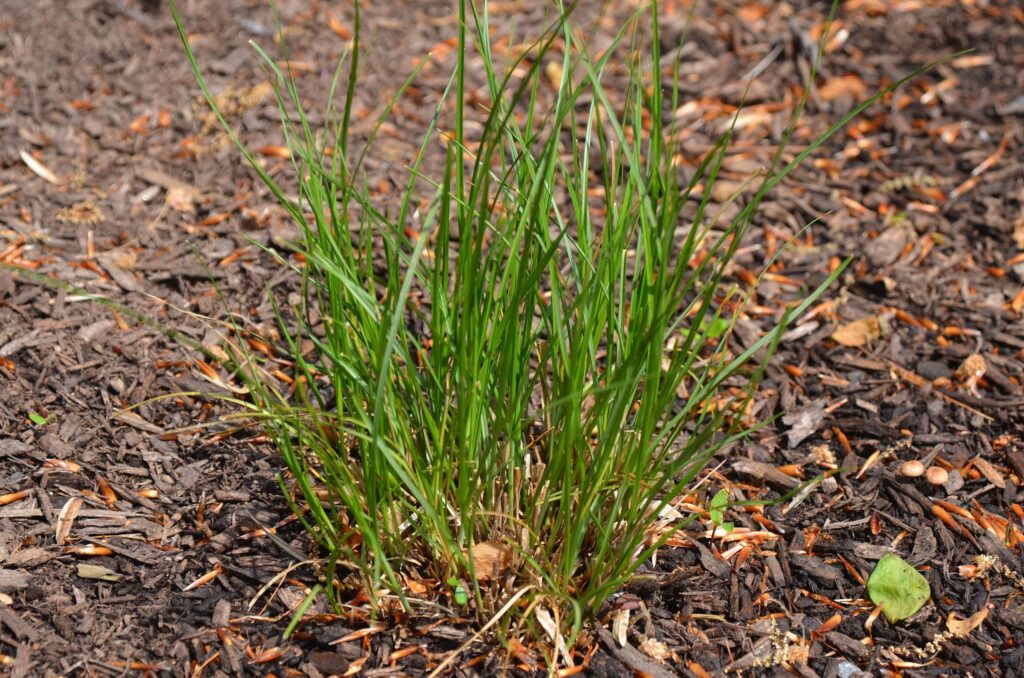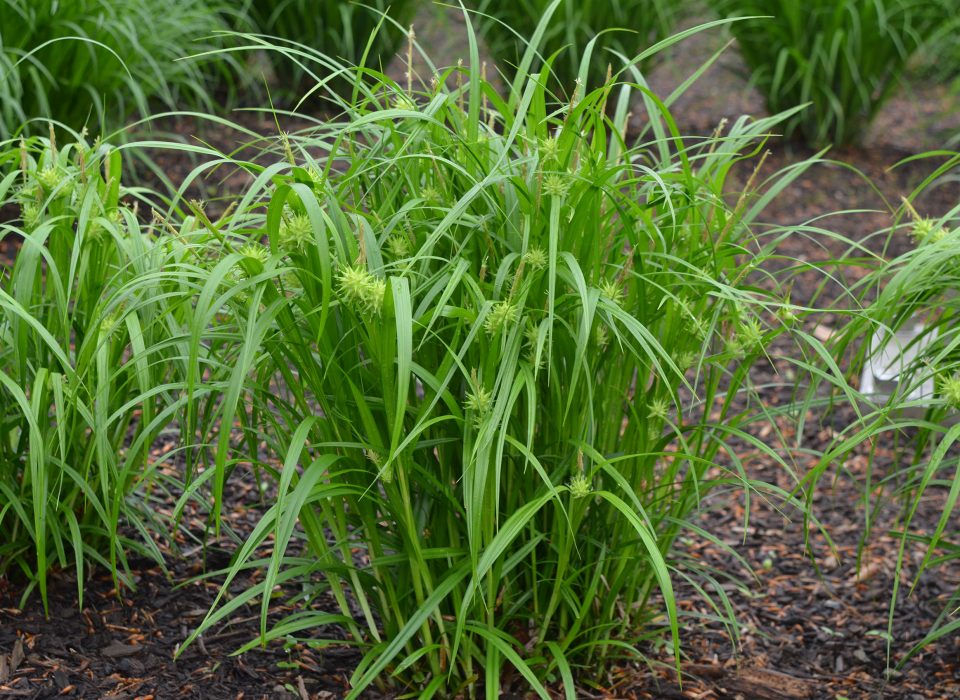By Jonathan Sciarcon
Sedges are “grass-like plants” in that they have skinny green stems, but they are not grasses. Sedges, unlike grasses, are in the Cyperus (Cyperaceae) family, have solid, triangular stems (occasionally round). They are not jointed or hollow like grasses. When looking at the stem, you can see the leaves are in three columns. The sheaths are usually closed, unlike grasses. There’s one seed (an achene) per flower, which looks very different from a grass seed (a grain); it’s lens-shaped or three-sided, possibly sporting hairs or bristles around its base. They are chiefly wetland plants.

Over the past half decade, sedges (Carex sp.), have gained increasing popularity in native landscapes on the east coast, so why not here? The Mt. Cuba Center at the University of Delaware recently published results on a multiyear study on the performance of various sedges in different light and moisture conditions. While the Mt. Cuba Center focused on sedges for the mid-Atlantic region, in this article I want to highlight a couple of low-water native Colorado sedges that are well suited for Front Range landscapes.
Sedges have numerous ecosystem benefits. Notably, they are a host plant for certain moth and butterfly species. They also improve soil and water quality and prevent erosion. As they are cool season plants, sedges come out of dormancy in early spring and can compete against non-native and invasive cool season plants before more aggressive warmer season native grasses enter active growth. Additionally, several native sedges can adapt to low-water conditions and even survive in landscapes without active irrigation systems.
Native Sedges In My Landscape
The two native sedges I have begun introducing into my landscape are Plains Oval Sedge (Carex brevior) also known as Short-beaked Sedge, and Heavy Sedge (Carex gravida) in Ackerfield’s Flora of Colorado, which states that Carex brevior is common “in moist meadows, grasslands, on floodplains, and along streams, 3500 – 9000 feet,” while Carex gravida is “found along pond margins and river bottoms, in moist canyons, and on sandstone rimrock, 3500 – 5500 ft.”


Carex brevior (left), Carex gravida (right) – photos by Mt. Cuba Center
Plains Oval Sedge (Carex brevior) is probably the more versatile of the two as it can thrive in full sun to almost full shade. Heavy Sedge (Carex gravida), which is often found in sunny locations throughout the Midwest and Great Plains regions, prefers full sun but can tolerate light shade. Both plants can survive on less than 15 inches annual precipitation. Also, both plants are clump-forming and relatively well behaved in the landscape.
Plains Oval Sedge (Carex brevior), and Heavy Sedge (Carex gravida) can each play multiple roles within a landscape.
- Ideal filler plants for those of us with extensive pollinator gardens (in my opinion)
- Suppress weed competition
- Valuable habitat to native flora and fauna
- Significant potential as native alternatives to non-native turfgrass lawns where smaller, grass-like plants are preferred. Based on their relatively short statures, both sedges would mix well with Blue Grama (Bouteloua gracilis) and Buffalo Grass (Buchloë dactyloides).
- Would mix well with other native ground covers such as Fringed Sage (Artemisia frigida) and Prairie Sage (Artemisia ludoviciana).
- Since both plants can handle part shade, would also work well in mixed and tall grass prairie plantings.
- Can thrive in rain and partially shaded gardens.
While I only have experience with the two sedges covered in this article, my hope is that more gardeners along the Front Range will begin incorporating other sedges as well. If you are a Wild Ones member who has experience utilizing native sedges in your landscape, please consider sharing your knowledge with the rest of us!
Propagation
I should note that I have propagated both plants from out-of-state seed sources (Prairie Moon Nursery in Minnesota and Prairie Legacy, LLC in Nebraska). Seeds from both nurseries have proven viable and the propagated plants have performed well in my yard.
Here is the process I use to germinate both Plains Oval Sedge (Carex brevior) and Heavy Sedge (Carex gravida), which each need around 60 days of cold stratification.
January, February, or early March – I fill a 2 inch deep 72- cell seed starting tray with organic coir and then add 3-5 sedge seeds per cell. The seeds can be surface sown and slightly pressed into the coir. Fluffed-up local “waste” bark can possibly be used in place of coir. Here are instructions. I then water the cells slightly, protect them with chicken wire and netting and leave them outdoors in part shade. If necessary, lightly water them every week so the coir does not dry out.
Mid-May – They should germinate around this time. I find that Carex brevior tends to germinate 1-2 weeks earlier than Carex gravida, but this is just an anecdotal finding. Once the plants germinate, water every few days if there is no precipitation.
July – Move them to 4 inch deep pots. You could also germinate them in 4 inch deep cells and then not bump them up.
September or October – My advice is to wait until this time to transplant them into the landscape, as they are cool season plants. Water well when transplanting and provide supplemental irrigation once per month in the first winter if there is a dry spell. The sedges will not produce seed heads until the second year.
Curious to learn more about transforming your garden into a habitat with Colorado native wildflowers, grasses, shrubs, and trees? Check out our native gardening toolkit, register for an upcoming event, subscribe to our newsletter, and/or become a member – if you’re not one already!
